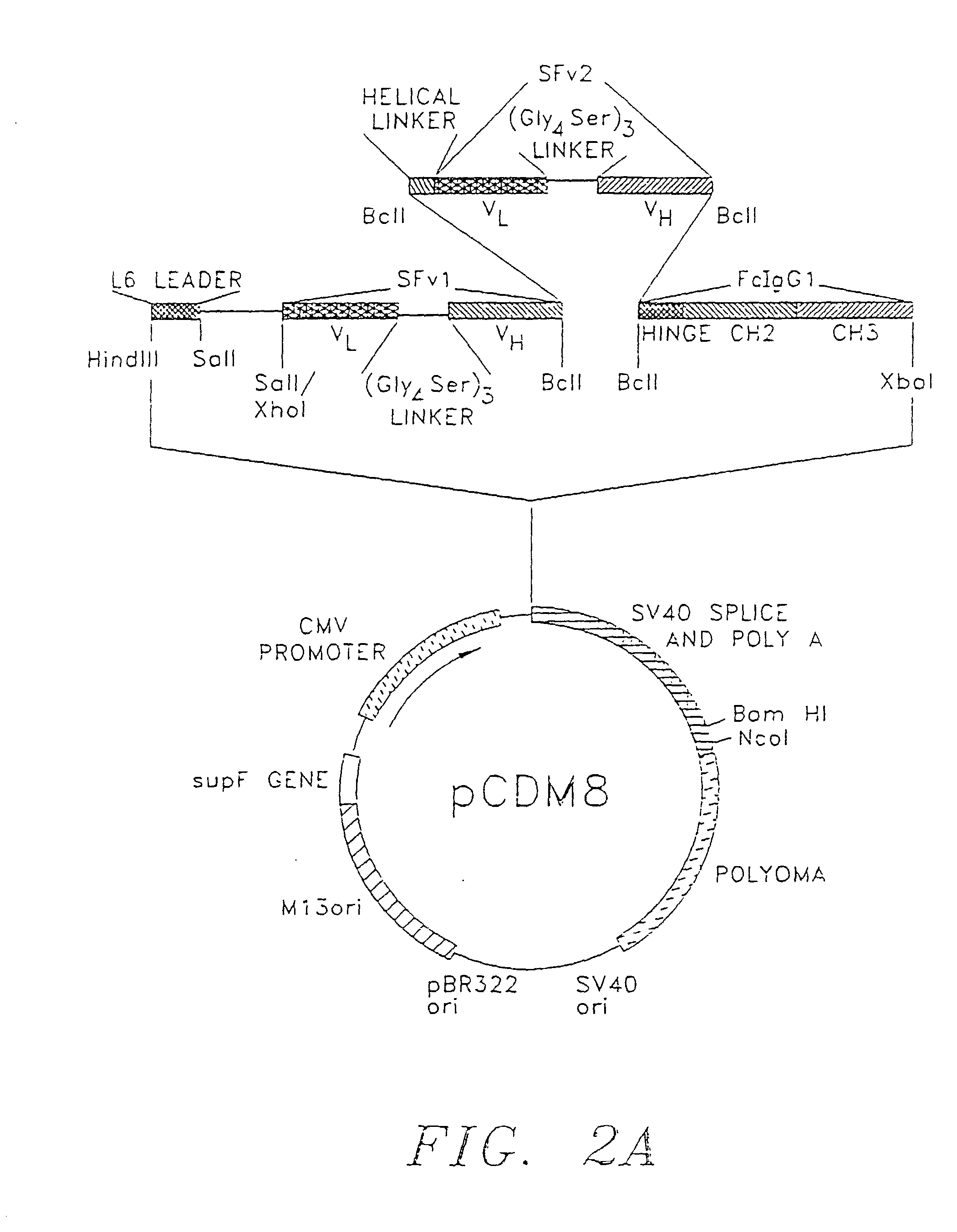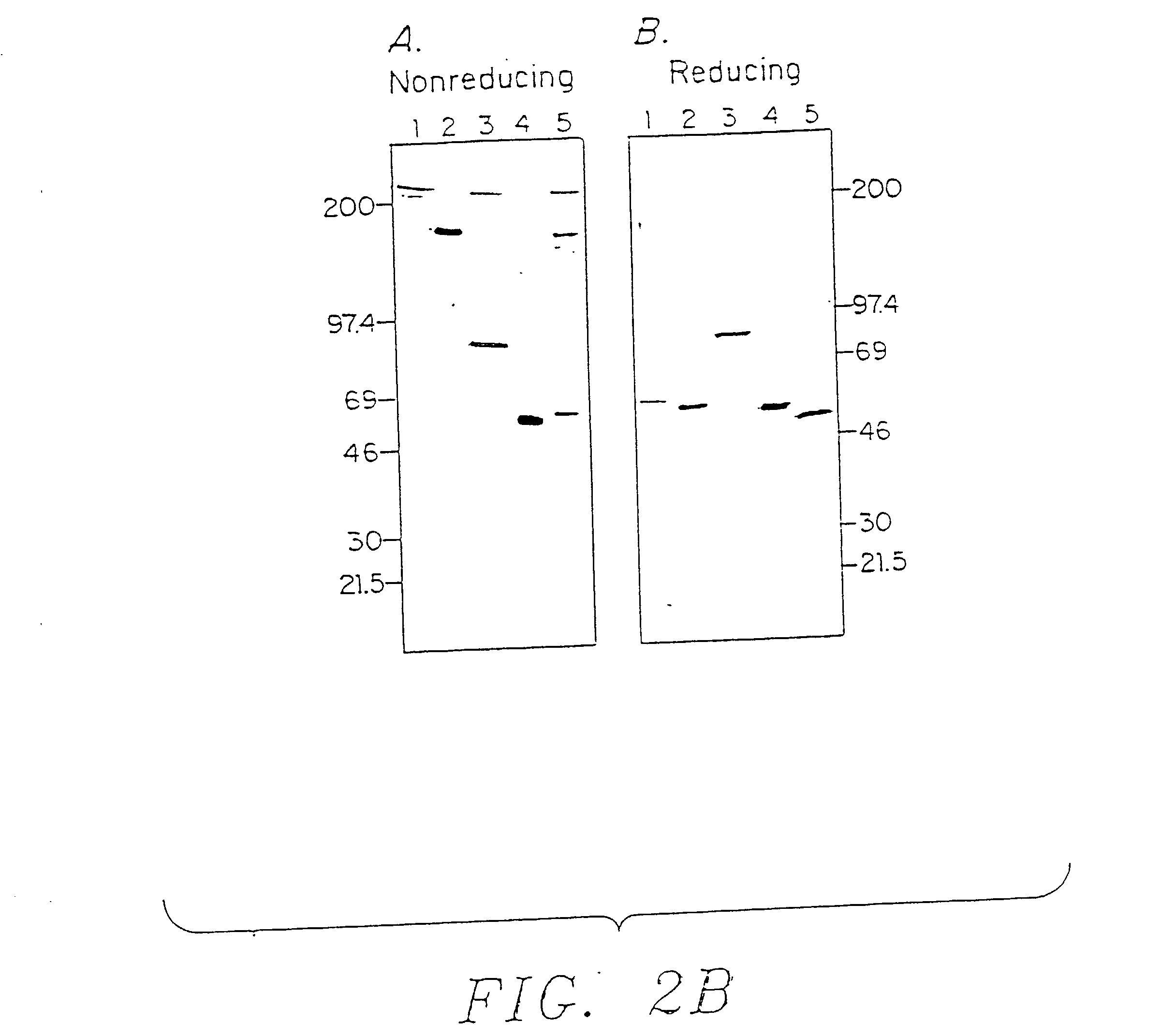Expression vectors encoding bispecific fusion proteins and methods of producing biologically active bispecific fusion proteins in a mammalian cell
a technology of fusion protein and expression vector, which is applied in the direction of fusion polypeptide, virus, dna/rna fragmentation, etc., can solve the problems of low yield, labor-intensive techniques, and inability to carry out large-scale therapeutic applications, and achieve the effect of preventing reciprocal killing
- Summary
- Abstract
- Description
- Claims
- Application Information
AI Technical Summary
Benefits of technology
Problems solved by technology
Method used
Image
Examples
Embodiment Construction
[0118] Materials and Methods:
[0119] Modification of Expression Vectors: The plasmids pCDM8 and piLNXAn were modified by replacing the stuffer fragment with several smaller stuffer fragments, each of which confers some functional property to the resulting fusion protein.
[0120] The mammalian expression vector is diagrammed with the alterations and additions made shown along the top portion of the vector. Expression of fusion cassettes is driven by the CMV promoter, and replication in bacteria and mammalian cells is achieved by the appropriate origins indicated at the bottom of the vector. The vector contains the supF gene to suppress nonsense mutations in the ampicillin and tetracycline genes present in the p3 plasmid in the appropriate host bacterial strains. The termination and poly A addition signals are provided by the appropriate regions from SV40.
[0121] The HindIII site at the 5' end of the stuffer region was used to insert a HindIII-Sal I cassette containing a leader sequence f...
PUM
 Login to View More
Login to View More Abstract
Description
Claims
Application Information
 Login to View More
Login to View More - R&D
- Intellectual Property
- Life Sciences
- Materials
- Tech Scout
- Unparalleled Data Quality
- Higher Quality Content
- 60% Fewer Hallucinations
Browse by: Latest US Patents, China's latest patents, Technical Efficacy Thesaurus, Application Domain, Technology Topic, Popular Technical Reports.
© 2025 PatSnap. All rights reserved.Legal|Privacy policy|Modern Slavery Act Transparency Statement|Sitemap|About US| Contact US: help@patsnap.com



